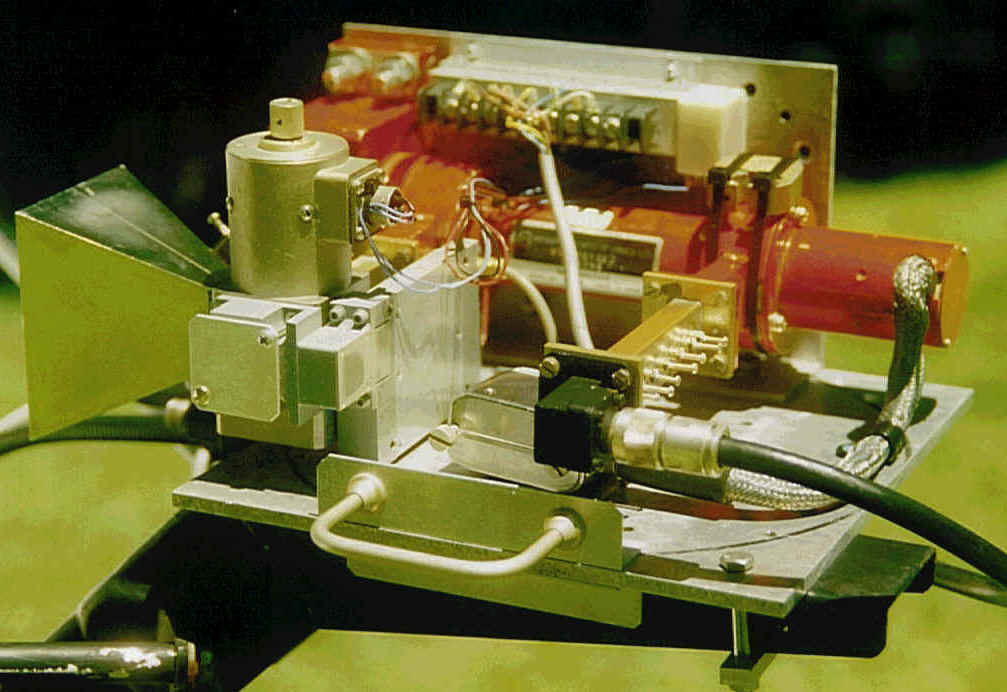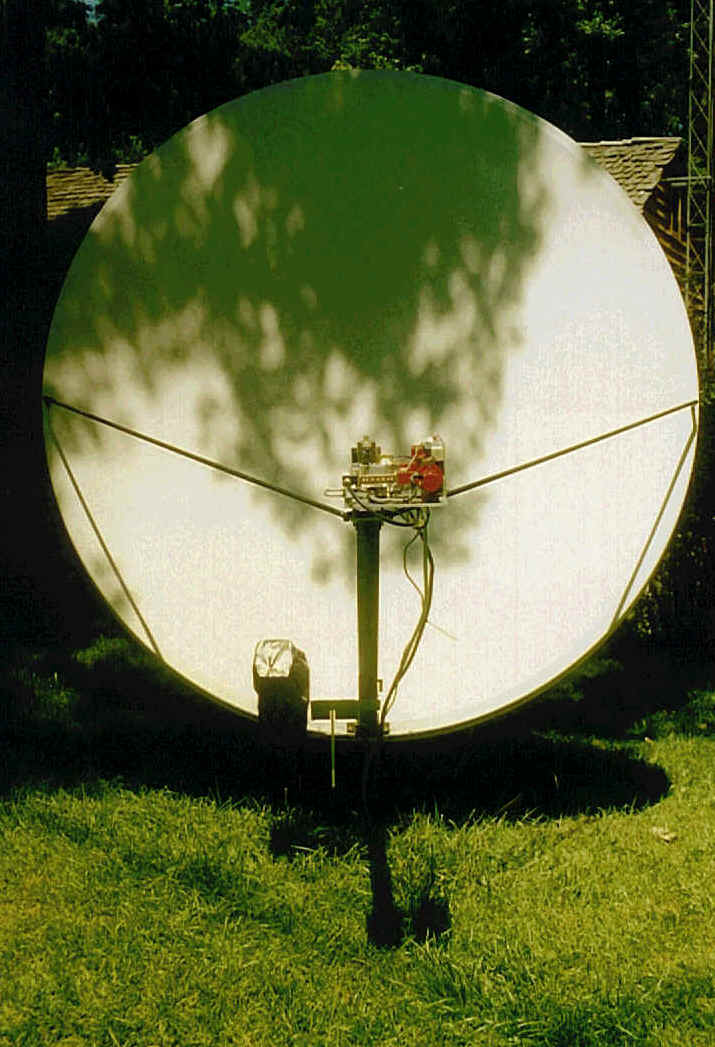| My first attempt to work 10 GHz EME was when VE3ONT put the big dish on
the air. I worked for two days straight to cobble enough stuff together
crudely, but nothing was heard. The good thing was that I had a start toward a
better system, which is still evolving. After refining the system receive ability, I heard
WA7CJO very clearly. I called W4HHK and held the phone to the speaker to share the
moment. Click on one of these to hear how Jim's signal was when first heard by me.
|
After a year or so of refining, I managed to work WB5LUA. My transmitter output was only 8 watts, to a 2.6 meter elliptical dish. Th receive noise figure was around 2 dB. I used an ICOM 970A as the 430 MHz IF, to a homebrew transverter. The transverter is all feedpoint mounted except that the local oscillator is piped out to the feedpoint through half inch superflex. The TWTA is also feedpoint mounted, with power monitored using a directional coupler. After calibrating the counter and measuring the LO frequency, I was close enough to the schedule frequency to hear Al's first transmission. N4ZRW witnessed the QSO at my end. | |
This is the feed assembly. The feedhorn is a
metallized plastic unit off of a Gunnplexer. The red TWT is connected to one port of
the waveguide switch through a directional coupler. The LNA is connected to the
opposite port of the WG switch. You can see a filter and amplifier on the input of
the TWT. Not shown underneath is the Watkins Johnson M18 mixer and an SMA relay
which switches the IF between two cables. IF postamplification is also underneath in
series with the IF output cable. All RF, LO and IF signals are routed into the shack
through FSJ4 Superflex. The picture to the right shows the feed as mounted on the
dish. Notice the TV camera mounted on the side of the feed support arm. |
|
|
| I now have a bigger TWTA and am in the process of reconfiguring everything to use it. I have switched to a 10 MHz TCXO as the stable LO reference (no more compensating for oven drift). I employ a vidicon CCTV camera with a 160 mm lens to track the moon. I know I'm on target because I calibrate using moon noise measured on a GR-1236A Unit IF amplifier at about 1 dB. Sun noise is around 15 dB. | ||

